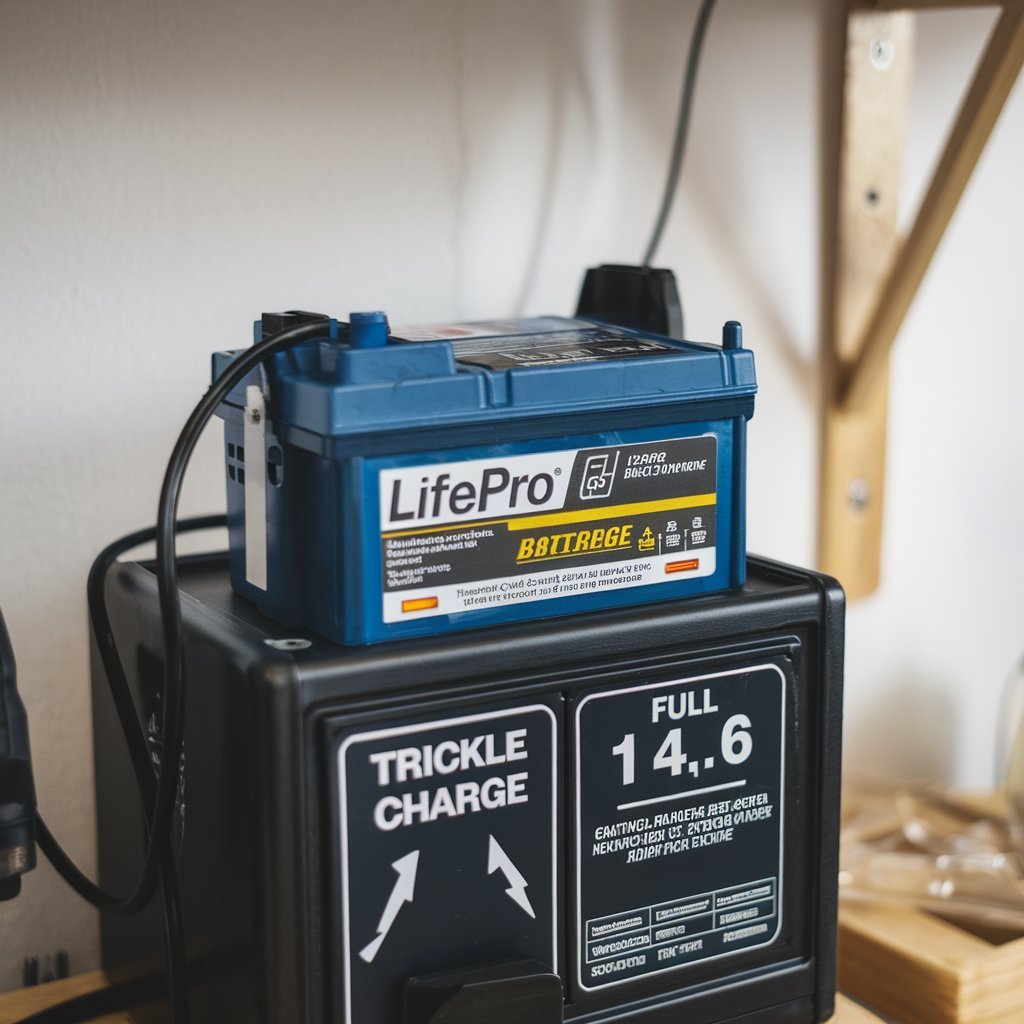Understanding the charging requirements is crucial for maintaining the health of your LifePro battery. Many users wonder, does LifePro need trickle charge or full 14.6? This article will delve deep into this question, exploring the nuances of battery charging and helping you determine the best charging method for your specific needs.
Understanding Battery Basics
Contents
- 1 Understanding Battery Basics
- 2 Does LifePro Need Trickle Charge or Full 14.6?
- 3 Benefits of Full Charging to 14.6
- 4 Downsides of Full Charging
- 5 Benefits of Trickle Charging
- 6 Downsides of Trickle Charging
- 7 Best Practices for Charging LifePro Batteries
- 8 Conclusion
- 9 FAQs: Does LifePro Need Trickle Charge or Full 14.6?
Before we discuss whether LifePro needs a trickle charge or a full 14.6, it’s essential to understand the basics of battery technology. Most LifePro batteries are lithium-based, requiring specific charging techniques to maximize lifespan and efficiency.
What is Trickle Charging?
Trickle charging maintains a battery’s charge level by providing a low and steady current. It is often used to keep batteries topped off, mainly when not used for extended periods.
What is Full Charging to 14.6?
On the other hand, complete charging to 14.6 volts is a method that brings the battery to its maximum charge level. This process usually involves applying a higher voltage until the battery reaches its total capacity, which is critical for ensuring it performs at its best.
Does LifePro Need Trickle Charge or Full 14.6?
The short answer is that it depends on your usage and storage habits. To understand this better, let’s break it down into scenarios.
Regular Use
If you use your LifePro battery regularly, charging it to the full 14.6 volts is the best option. This ensures that you have maximum power available for your devices. However, consistently charging to total capacity may only be necessary sometimes.
Long-Term Storage
If you plan to store your LifePro battery for an extended period, trickle charging can be beneficial. Maintaining a lower charge helps prevent the battery from going into a deep discharge state, which can lead to permanent damage.
Optimal Charging Cycles
Many experts recommend combining both methods for optimal battery health. For instance, you could charge your battery to full 14.6 after heavy use and switch to trickle charging if you don’t plan to use it for a while. This way, you balance immediate performance and long-term health well.
Benefits of Full Charging to 14.6
Charging your LifePro battery to full 14.6 volts has several advantages:
- Maximum Capacity: You ensure that your battery is fully charged, which means you have maximum energy available for your devices.
- Improved Efficiency: Full charging can help improve the battery’s efficiency, ensuring it performs optimally.
- Better Longevity: Regularly charging to full can prevent issues that arise from being undercharged, thus enhancing the battery’s overall lifespan.
Downsides of Full Charging
However, complete charging isn’t without its downsides:
- Heat Generation: Charging to total capacity can generate heat, which may shorten the lifespan of your battery over time.
- Overcharging Risk: If not monitored correctly, complete charging can lead to overcharging, harming battery health.
Benefits of Trickle Charging
Trickle charging offers its own set of benefits:
- Prevention of Deep Discharge: By keeping the battery at a lower, steady charge, you prevent it from going into deep discharge, which can be damaging.
- Lower Heat Generation: Since the current is lower, the heat generated is also reduced, which benefits the battery’s longevity.
- Convenience: Trickle charging can be hassle-free for users who don’t need immediate power to keep the battery topped off.
Downsides of Trickle Charging
There are also some drawbacks to consider:
- Limited Capacity: A trickle charge doesn’t fully charge the battery, which may be an issue for users needing immediate power.
- Slow Charging: This method is slower than complete charging, so it may not be suitable if you need to use the battery soon.
Best Practices for Charging LifePro Batteries
To make the most out of your LifePro battery, consider the following best practices:
Regular Monitoring
Check the battery level regularly and decide whether a whole or trickle charge would suffice.
Avoid Deep Discharges
Try to avoid letting your battery discharge too low. Keeping it above 20% can help prolong its life.
Use the Right Charger
Always use a charger that is compatible with your LifePro battery. This can help prevent overcharging and ensure the correct voltage is applied.
Mix Charging Methods
As mentioned earlier, combining complete charging and trickle charging can provide the best results for both immediate use and long-term health.
Conclusion
So, does LifePro need trickle charge or full 14.6? The answer isn’t black and white. Depending on your usage, combining both methods yields the best results. Understanding your battery’s needs and adopting the best charging practices can significantly extend its lifespan and enhance performance. Whether you opt for full or trickle charging, your LifePro battery will benefit from careful management. By implementing these strategies, you can ensure your battery remains reliable and efficient for all your needs.
FAQs: Does LifePro Need Trickle Charge or Full 14.6?
Can I use a standard charger with my LifePro battery?
It’s best to use a charger designed for your LifePro battery to avoid damage.
How often should I fully charge my LifePro battery?
It depends on usage, but once every few cycles is generally recommended.
Is it wrong to leave my battery on a trickle charge?
It is usually safe to leave it on a trickle charge for extended periods, but regular monitoring is advised.
What happens if I overcharge my LifePro battery?
Performance problems and a shorter battery life can result from overcharging.
Should I store my battery fully charged?
It’s better to store it at about 50% charge to preserve its health.




